Joe Patronite: Dia Los Muertos
The Image
Photographer:
Joe Patronite
Location:
Tucson Arizona
Time / Date:
2005-2013
The Technical
Gear:
Camera Body: Nikon D700
Lens: Nikon 70-200mm f/2.8G AF-S ED VR II
Camera Settings:
Shutter Speed: 1/1500s
Aperture: f/5.6
ISO: 200
Focal Length: 200mm
The Story
Background:
I became interested in the All Souls Procession in Tucson, Arizona around 1991. I had moved away from Tucson to pursue my career elsewhere in the early 1980’s, but had always kept my ties to the Southeastern Arizona community, visiting several times a year. The Day of the Dead project is a collective gallery of images I’ve produced while wandering the streets of Tucson on the afternoon/early evening of the procession, usually held on the weekend prior to or just after All Souls Day. For a documentary photographer, the festival has all the touches of wonderful setting, people committed to the remembrance of loved ones, pageantry and elaborate costumes/masks and make-up.
Source: Wikipedia.org. Day of the Dead (Spanish: Día de Muertos) is a Mexican holiday observed throughout Mexico and around the world in other cultures. The holiday focuses on gatherings of family and friends to pray for and remember friends and family members who have died. It is particularly celebrated in Mexico where the day is a bank holiday. The celebration takes place on October 31, November 1 and November 2, in connection with the triduum of Hallowtide: All Hallows’ Eve, Hallowmas, and All Souls’ Day.[1][2] Traditions connected with the holiday include building private altars called ofrendas, honoring the deceased using sugar skulls, marigolds, and the favorite foods and beverages of the departed, and visiting graves with these as gifts. They also leave possessions of the deceased.
The Scene:
The processions are solemn events, as the popularity has grown over the years, as many as 5000+ participants will march. The scene is reverent somewhat, whimsical at times, many happy expressions come from the crowd. I walk the streets early, following light as it streams down the cross-streets in the 4th Avenue area of Tucson. Many times the best images, such as the woman in the car come from side street diversions I will take while working scene.
Gear:
Through the years I’ve mostly worked with Leica cameras, and black and white print film, which after processing I take into the scanner and prepare large (600dpi) files. Then post-production continues in Photoshop.
Through the years I’ve mostly worked with Leica cameras, and black and white print film, which after processing I take into the scanner and prepare large (600dpi) files. Then post-production continues in Photoshop.
The Leica cameras ( M7/M6/M4P/M42) are usually equipped with 50mm Summicron f2.0/ Summilux 21mm/f2.8/ and Summicron 90/f2. Some years 35mm Summicron f2.0. In addition to the Liecas over the course of the years I’ve produced images with iPhones and in 2013 a Holga plastic camera.
Camera Settings:
Fixed exposure/settings on iPhone G4s & G5. Set exposure with 400iso film on Holga cameras. Black and White film, Kodak TMax 100- pushed +1/+2 stops with Leica Cameras. TriX 400 by Kodak, pushed one stop when necessary.
Making the Shot:
Working the streets of my city gives me satisfaction, watching as younger generations mingle with their elders, people of all clothes coming together to keep memories of loved ones alive is always fulfilling, and almost always is a visual gold mine as I am concerned.
In the bustle of daily lives, and the constant society pressure to succeed, to have more, or the latest contraption, it is refreshing to see costumes/ makeup and floats created by hand, with elegant touches, and loving care.
Usually I move slowly through the crowds, looking for uniqueness. Of the years I’ve documented the procession, only one did I stay for the whole of the procession and burnings, seeing I am more interested in the moments in the late afternoon towards sunset, not the darkness of the city streets during the event itself.
Editing & Processing:
All the film, or digital files are processed accordingly. Since I currently do not have a wet darkroom, the film stock is sent to develop and proof sheeted. I scan images I feel are best representing the yearly adventure. Files in Photoshop are layered PSDs, then are outputted into large sized TIFF for printing, smaller sized compressed jpegs for any digital showing, including usage on website.
Looking Back:
Some years the light is super nice, as this event is held in the northern hemisphere in the fall, and the location being in southern Arizona, the low- directional light from the west is always wonderful when it comes. Working small sections, not trying to “cover the event” allows me freedom to produce wonderful, documentary images.
Advice:
Take time, work the scene, walk the perimeters, walk the busiest parts. I try always to stay away from any other photographers, or wait until a subject that catches my attention is alone, perhaps in a moment of reflection.
Inspiration:
Collectively: MAGNUM photographers. Sebastian Salgãdo, and others who have walked their own paths.
About the Photographer
Joe Patronite travels the world on documentary, advertising, editorial and corporate assignments. Patronite, three-time nominee for the prestigious Pulitzer Prize, has been honored in every area of advertising, communications and journalism. The images presented are from commissioned projects and personal essays, including an extended documentation (Gallery pages 3 & 4) of the loving relationship, physical and mental decline and death of a spouse from Alzheimer’s disease.
Contact:
[email protected] or +1 (410) 336 1211.
Website: www.patronite.com
Submit Your Images
The Image Story is all about inspiring images. We want to share and showcase your very best images—the ones that you’re most excited to share and the ones that tell us who you are as a photographer. Submit your images to be featured on the Image Story
